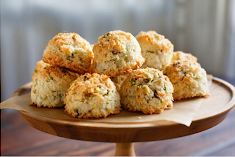Desserts for Passover to Celebrate the Festival of Freedom
As spring approaches, the Jewish Passover (also called Pesach) holiday draws near along with a variety of desserts for Passover. Similar to Lent, Passover brings some dietary limitations during this week-long holiday of celebrating freedom. Thus, it introduces challenges in the making of desserts. We will discuss the obstacles, and the common solutions, list delicious Passover desserts, and share a few inspiring freedom stories.
Passover is an important Jewish holiday that celebrates the famous episode of how Moses led the enslaved Hebrews to freedom (out of Egypt) to the Promised Land, Israel, and received on the way the Ten Commandments on top of Mount Sinai.
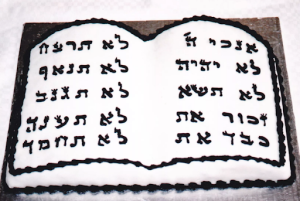
Ten Commandments decorated cake (Temptations)
What Does Kosher for Passover Mean?
This holiday includes an age-old tradition: forgoing any food that includes leavened agents (e.g., yeast) with one of these five grains: wheat, spelt, barley, oats, and rye for a period of one week. These are called chametz and practicing Jews may not own, eat or benefit from them during this holiday. This tradition is a reminder of the Hebrews’ swift escape from Egypt and the hardship they endured.
Let’s first take a look at the story of Passover and jump into all the Passover desserts you can find and eat.
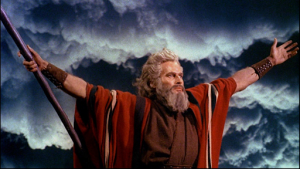
Charlton Heston as Moses in The Ten Commandments (1956)
The Passover Story
In Ancient times (1900 BCE), the Hebrews migrated south and settled in Egypt, due to a drought in their native land (present-day Israel). Unfortunately, they had to obey the Pharaoh’s laws and were forced into slavery, for centuries after. One day, Moses, a Hebrew raised by the Pharaoh’s family, managed to convince the Pharaoh to let the Hebrews go. He gathered his people and led them out of Egypt, freeing them from slavery and guiding them toward their homeland.
However, Pharaoh regretted his decision and sent his army after them. The Hebrews had to leave fast, only carrying their essential goods, since the Egyptian army was at their heels. They didn’t have enough time to allow their bread to rise and consumed it unleavened, dry, and flat. In the end, Moses successfully led them out of Egypt. There are a few film adaptations of this biblical story, including The Ten Commandments, a 1956 film starring Charlton Heston as Moses.
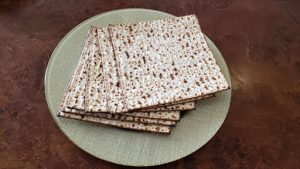
Matzah bread for Passover
Yummy Desserts for Passover
So, no fermentation, no raising dough, and no leavening is allowed. Instead of regular bread, the practicing Jews eat matzah (matzo), which is an unleavened, flat bread. But what about desserts? How do you make them under such restrictive conditions? While many don’t enjoy eating the dry and crispy bread, many Passover desserts make use of matzah bread or matzah flour to prepare wonderfully sweet and low-carb treats.
Here are a few examples of popular Pesach desserts:
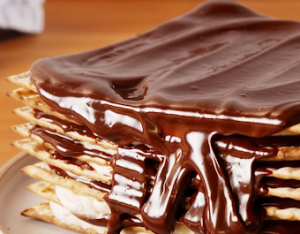
Matzah icebox cake (Good Housekeeping)
- Matzah icebox cake: With decadent chocolate ganache, cream, and coffee powder topping, this tastes just like tiramisu, only crunchier! Who can resist adding more and more layers to this makeshift cake?
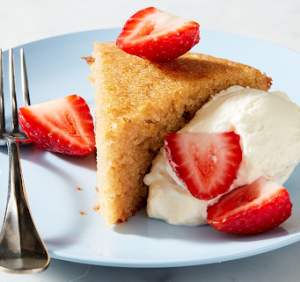
Gluten and dairy-free almond cake (Delish)
- Almond cake: Almond cake is a beloved Passover classic, that does not contain regular flour or dairy. Instead, it is made with almond powder, eggs, and sugar. Almond cake is so addictive that it will leave you wanting more. Additionally it paires well with a variety of toppings, including cream, fruits, lemon zest, chocolate, and everything in between.
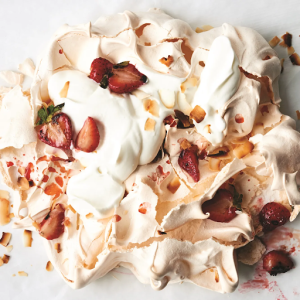
Giant meringue (Epicurious)
- Meringue: Of course, meringue is the perfect Passover dessert. It’s made without any wheat, so you can enjoy tons and tons of meringue during the holiday.
Coconut nut macaroons (New York Times)
- Macaroons: Macaroons offer you many options, as they can be made with matzah meal, coconut powder, or any nut flour (e.g., almond, chestnut, peanut) as a substitute. You can add lemon or chocolate, and let your imagination run wild.
 Chocolate Toffee Matzo Crack (Once Upon a Chef on Pinterest)
Chocolate Toffee Matzo Crack (Once Upon a Chef on Pinterest)
- Matzah toffee: Among all desserts for Passover, this looks just great on a table after a large meal, and you will succumb to its crunchy, salty, nutty, and chocolatey goodness.
Considering that this is a holiday celebrating freedom, let’s look at a few other stories of freedom, both past and present.
Struggle for Freedom Stories Across History
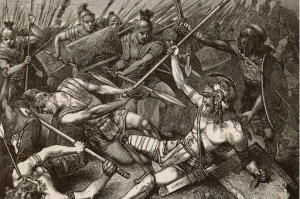
The Death of Spartacus, Hermann Vogel (1882)
Spartacus and the Roman Empire
If you ask people to cite a freedom story of classical antiquity, chances are that many would tell you about Spartacus, a Greek that lived between 103 and 71 BC. After being captured by Romans, he was forcefully put in a gladiator school to learn how to fight and entertain crowds. Naturally, during this time he acquired great physical strength and fighting skills.
One day, Spartacus and around 70 other slaves devised a plan to arm and free themselves from their captors. Using kitchen utensils, they fought their way out of the gladiator school and defeated soldiers sent to recapture them. Once free, these slaves, led by Spartacus and two others, organized a larger slave revolt. As their victories against Roman legions mounted, word of this rebel group spread and the slave army grew to include an estimated 70,000 people. The Roman Senate sent bigger and bigger squadrons to crush this rebellion. Although Spartacus and his army were eventually defeated and killed after numerous battles, the story reverberated throughout the ancient world. This story still inspires people and shows that the desire for freedom can shake even the most powerful empires.
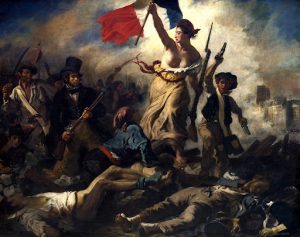
Liberty Leading the People by Eugène Delacroix (July Revolution of 1830)
The French Revolution
Another well-known struggle for freedom is the French Revolution. In the late 18th century, the Kingdom of France was burdened by poverty, famine, and inequality between social classes. As the peasants’ anger grew and intellectuals and philosophers called for change, a revolt broke out in 1789, with the initial aim of improving people’s living conditions, and eventually toppling the monarchy.
The revolutionaries seized the Bastille, a prison tower and an important symbol of the established power. Revolutionary armies formed and clashed with Royalist forces, triggering civil wars across the country. Despite the violent nature of this revolution, which claimed the lives of thousands off nobles, clergy, and peasants alike, the French Republic was eventually established, and the Declaration of Human Rights was signed, cementing fundamental human rights for French citizens and abolishing hierarchical social classes.
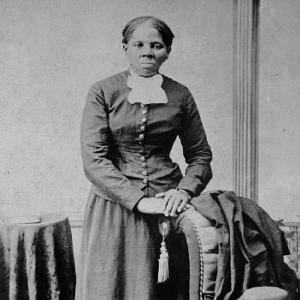
Harriet Tubman
Harriet Tubman and the Underground Railroad
Known as the “Moses of her people,” Harriet Tubman was born around 1820 in Dorchester County, Maryland. Enslaved along with her siblings from the start of her life, she was sold at the age of five as a domestic servant. However, she quickly showed signs of resistance to slavery. At the age of twelve, she intervened to stop her master from beating another slave. Later on, she joined the Underground Railroad, a network of clandestine routes and safe houses, established by slavery abolitionists and free slaves across the Southern US to help other slaves escape to the free states and Canada.
Tubman escaped in 1849 and found refuge thanks to this network, and two years later returned south to help other slaves escape. She managed to free so many slaves that slaveowners offered a $40,000 reward for her capture or death. During the American Civil War, she served as a spy and scout for the Unionists, using her knowledge of the south to find and transmit intelligence on troop placements and supplies, while also working as a nurse. Tubman is considered the first African-American woman to serve in the US military.
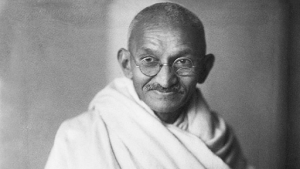
Mahatma Gandhi
Mahatma Gandhi and the Independence of India
In another remarkable example of non-violent protest, Mahatma Gandhi led a peaceful resistance against the British Empire to help India gain independence. Knowing that an armed rebellion would get crushed by the British army, he resorted to mass civil disobedience, including boycotts of British goods, legislatures, courts, offices, and schools.
One of Gandhi’s most famous protests was the Salt March of 1930. Prior to that, Indians were forced to buy highly taxed British-imported salt, and were prohibited from producing any locally. Gandhi led a long march across the country during which protesters gathered buckets of salt along India’s coast, technically “producing” salt, and breaking the imposed rule.
Gandhi’s vision was to promote rural education, social equality, and strong industry, while advocating peaceful dialogue between Hindus and Muslims, and for all to share one country. Unfortunately, he was assassinated in 1947 by a Hindu radical who was against this coexistence between religions. However, today people still look to Gandhi’s legacy of non-violence and quest for freedom.

The 14th Dalai Lama
The 14th Dalai Lama and Tibetan Freedom
As a global figure, the Dalai Lama has led a decades-long peaceful struggle against China’s repressive occupation and annexation of Tibet aimed at erasing its culture. While receiving his Nobel Peace Prize in 1989, he emphasized how he is willing to seek compromise and reconciliation with China, despite the violence it had inflicted on Tibet over the years, and presented a plan for Tibetan independence. China rejected his plan, but the Dalai Lama’s fight for freedom continues to this day.
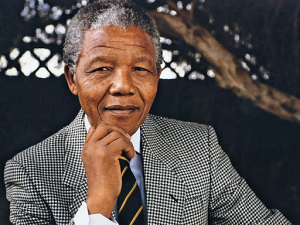
Nelson Mandela
Nelson Mandela and the End of the Apartheid
Nelson Mandela was a South-African activist who fought against the apartheid system in his country, which segregated Whites and Blacks in all spheres of society. Blacks and non-Whites lived as second-class citizens, while the minority of Whites held all political, economic, and social power.
Mandela rose up against this system, and was imprisoned for 27 years, because of his active role within the African National Congress, which was labelled a terrorist organization at the time. Despite his imprisonment, he continued to inspire the anti-apartheid movements. After his release from prison and the end of the apartheid regime, Mandela was elected as South Africa’s first Black president.
Summary
The fight for freedom worldwide is a never-ending one. While humanity has made great strides in achieving freedom over the centuries, and while many countries have relatively high levels of freedom, there are others still struggling for basic rights. Across the world, in fact, millions of people are trapped in what is considered modern slavery. According to Anti-Slavery International, there are many forms of modern slavery that are yet to be eliminated:
- Human trafficking
- Forced labour
- Debt bondage/bonded labour
- Descent–based slavery
- Child slavery
- Forced and early marriage
- Domestic servitude
The organization estimates that around 50 million people worldwide are victims of one of these kinds of slavery. Thankfully, there are wonderful people working on eradicating these conditions, bit by bit. For example, Free the Slaves, an international NGO, has a strategy made to reach this goal, which consists of educating vulnerable communities, caring for and reintegrating survivors, strengthening the rule of law, and improving socioeconomic conditions. You can read their full plan here.
We hope this blog has piqued your interest in delectable desserts for Passover, and the universal pursuit of freedom!



